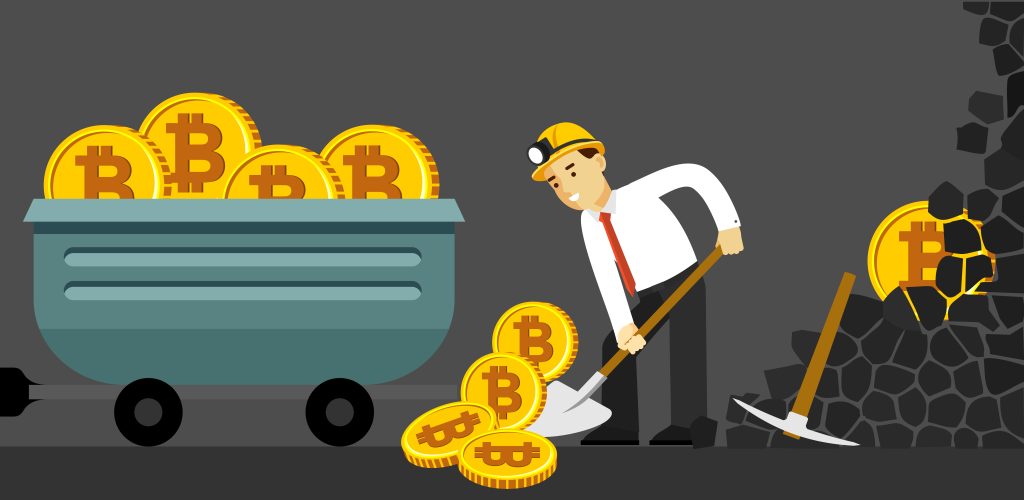As we venture deeper into the digital age, the question of what is Bitcoin becomes increasingly relevant as we witness a financial revolution that’s reshaping the way we think about money. Cryptocurrencies have emerged as a groundbreaking alternative to traditional forms of currency, offering a myriad of benefits that cater to our increasingly digital lifestyles. Among these digital currencies, one stands tall as the pioneer and undisputed champion—Bitcoin.
In this comprehensive guide, we’ll take you on a journey through the fascinating world of Bitcoin, examining its history, inner workings, and the potential it holds for transforming the way we interact with money.
What is Bitcoin?


The story of Bitcoin begins in 2008 when an enigmatic individual (or group) going by the name of Satoshi Nakamoto published a Whitepaper outlining the concept of a decentralized digital currency. This groundbreaking idea aimed to eliminate the need for centralized authorities, such as banks and governments, in financial transactions. Just a year later, in 2009, Bitcoin became a reality, and the world of finance would never be the same.
At its core, Bitcoin is a decentralized digital currency that relies on blockchain technology to enable secure, peer-to-peer transactions and overall, the world’s first and most popular cryptocurrency. It’s often referred to as “digital gold” due to its limited supply of 21 million coins, which makes it an attractive store of value for many investors.
The genius of Bitcoin lies in its ability to solve complex problems that have plagued traditional financial systems for years. For example, the Bitcoin network elegantly addresses the Byzantine Generals’ Problem, a notorious issue in distributed systems.
Additionally, the use of blockchain technology effectively eliminates the risk of double-spending—a scenario where someone spends the same digital currency twice.
How does Bitcoin Work?
To truly appreciate the ingenuity of Bitcoin, it’s essential to understand the mechanics of how it works. At the heart of the system lies the blockchain—a decentralized public ledger that records every transaction made using the currency. Each “block” in the chain contains a batch of transactions, which are cryptographically linked to the previous blocks, creating a verifiable, tamper-resistant history of all Bitcoin transactions.
The magic sauce that makes the Bitcoin network tick is its use of cryptographic hash functions. These functions take an input (in this case, transaction data) and produce a fixed-length output, known as a hash. What makes this process so secure is the fact that even the slightest alteration in the input data results in an entirely different hash, making it virtually impossible to tamper with the information stored on the blockchain.
Mining Basics


One of the key components of the Bitcoin ecosystem is the process of mining. Mining involves solving complex mathematical problems, which are essentially puzzles based on the cryptographic hash functions mentioned earlier. These problems require a substantial amount of computational power to solve, and the miners who dedicate their resources to this task play a crucial role in maintaining the network’s security.
When a miner successfully solves a problem, they validate a batch of transactions and create a new block, which is then added to the blockchain. As a reward for their efforts, miners receive newly minted Bitcoins as well as transaction fees from the transactions they validate. This incentive system not only keeps the network running, but also ensures that there’s a steady stream of new coins entering circulation.
Proof of Work
The process of mining is underpinned by a consensus algorithm known as “proof of work” (PoW). This mechanism requires miners to demonstrate that they’ve expended a significant amount of computational effort to solve the mathematical problem at hand. In other words, PoW makes it extremely difficult for any single entity to take control of the network by requiring a prohibitively large amount of computing power to manipulate the blockchain.
The PoW algorithm ensures that the miners who contribute the most resources to the network have the highest chance of being rewarded with new Bitcoins. This competitive process effectively decentralizes the power within the network, preventing any single player from gaining control and ensuring the integrity of the system.
How is Bitcoin Created?
We touched upon earlier that miners who successfully solve the mathematical problems involved in mining receive new BTCs as a reward. People often refer to this process as the “block reward,” and it serves as the primary mechanism for introducing new coins into circulation.
When Bitcoin first launched, miners received a block reward of 50 BTC per block. However, to control the rate at which new coins enter the market and maintain scarcity, the reward halves approximately every four years in an event called the “halving.” At the time of writing, miners receive a block reward of 6.25 Bitcoins per block.
Satoshi Nakamoto mined the very first block in the Bitcoin blockchain, known as the “genesis block,” on January 3, 2009. Experts estimate that the last BTC will be mined around the year 2140, after which miners will continue earning rewards through transaction fees to keep the network operational and secure.
The Benefits of Using BTC


Bitcoin has become increasingly popular due to its unique features and advantages in the world of digital currencies. Some of these benefits include:
- Lower transaction fees
- Faster payments
- Increased privacy
- Potential hedge against inflation
Lower transaction fees make Bitcoin an attractive option for merchants and consumers, as it can reduce the costs associated with traditional payment methods. Its faster transaction times, especially for cross-border payments, are another boon. The decentralized nature of Bitcoin provides increased privacy and protection from potential censorship by centralized authorities, making it an appealing choice for those seeking control over their financial assets. Lastly, with its limited supply, Bitcoin is considered by some as a potential hedge against inflation, similar to gold.
Risks and challenges associated with Bitcoin


As with any investment or technology, there are risks and challenges associated with BTC. These potential issues include:
- Price volatility
- Regulatory concerns
- Security issues
- Environmental impact
Price volatility can be a significant concern, as Bitcoin’s value can fluctuate wildly over short periods. Regulatory concerns also exist, as governments worldwide continue to grapple with digital currencies, leading to potential new regulations and crackdowns. Security is another major issue, as the digital nature of Bitcoin makes it susceptible to hacking, phishing, and other malicious activities. Finally, the environmental impact of Bitcoin mining has drawn criticism due to the energy-intensive nature of the process, prompting debates over long-term sustainability.
How to get started with Bitcoin
Jumping into the world of Bitcoin might seem intimidating at first, but with the right information, you’ll be off to a great start. Before you begin, keep these key steps in mind:
- Learn about Bitcoin
- Set up a Bitcoin wallet
- Purchase Bitcoin
- Safely store your Bitcoins
Start by understanding the technology behind Bitcoin and familiarize yourself with the benefits and risks. Next, you’ll need a Bitcoin wallet to manage your digital currency.
What is a bitcoin wallet?


A Bitcoin wallet is a digital tool that enables users to manage their Bitcoin transactions and holdings securely. Generally speaking, It comprises a public address (similar to a bank account number) and a private key (like a PIN) that grants you access to your funds. Hundreds of wallets are out there, they come in various forms, including software, hardware, and even paper wallets. Some of the major brands are:
It’s essential to choose a wallet that suits your needs and provides the necessary security features to protect your digital assets from theft or loss.
Always remember to back up your wallet and safeguard your private keys, as losing access to them means losing your Bitcoin holdings.
Once you’ve set up your wallet, you can acquire Bitcoin in several ways, such as purchasing it through an exchange or accepting it as payment for goods and services. It’s a very similar process to buying CYT tokens.
You might also consider mining Bitcoin, although this option requires a significant investment in hardware and energy resources.
Storing your Bitcoins: Hot wallets vs. cold wallets


When it comes to storing your Bitcoin, there are two primary options: hot wallets and cold wallets.
Let’s start with Hot wallets which are online storage solutions, meaning they’re connected to the internet. They offer the advantage of being easily accessible and convenient for making transactions. However, this connectivity also exposes them to potential cyber threats.
On the other hand, cold wallets store your Bitcoin offline, providing an additional layer of security against online attacks. Cold wallets can take the form of hardware devices or even paper wallets, which store your private keys on a physical medium. While cold wallets offer enhanced security, they can be less convenient for frequent transactions and may require more effort to set up and maintain.
Bitcoin Addresses: Decoding the Crypto Lingo
In the world of Bitcoin, there’s more than meets the eye when it comes to addresses. Bitcoin addresses come in various forms, each with its unique set of features and use cases. Let’s dive into the three main types of addresses: P2PKH (Pay-to-Pubkey Hash), P2SH (Pay-to-Script Hash), and Bech32.
P2PKH Addresses: The Bitcoin Classics
P2PKH addresses, which start with a “1,” are the OGs of the Bitcoin address world. These original addresses are widely compatible with most wallets and services, making them the go-to choice for many users. They provide a tried-and-true method for sending and receiving transactions on the Bitcoin network.
P2SH Addresses: Flexing with Advanced Features
Beginning with a “3,” P2SH addresses kick things up a notch by allowing for more complex transaction types. These addresses are perfect for those who crave a bit more pizzazz in their Bitcoin dealings, such as multi-signature wallets and other advanced scripts. P2SH addresses enable users to explore a broader range of use cases and security features.
Bech32 Addresses: The Cutting-Edge Contenders
Last but not least, Bech32 addresses, starting with “bc1,” are the new kids on the block(chain). They offer improved efficiency and error detection, making them the preferred choice for SegWit (Segregated Witness) transactions. These lean, mean, crypto machines are designed for those looking to maximize their Bitcoin experience with the latest tech advancements.
Wrapping things up
As we’ve delved into in this article, Bitcoin stands as a trailblazing and revolutionary digital currency poised to shake up traditional financial systems. In a nutshell, Bitcoin and the Blockchain Technology has forged a new path for managing and transferring value, offering greater efficiency, security, and democracy than any preceding system.
Undoubtedly, embarking on the Bitcoin journey is an electrifying yet daunting adventure. However, by understanding the mechanics, benefits, and risks of this groundbreaking digital asset, you can equip yourself to make informed decisions about investing in or using BTC as a payment method.
As the cryptocurrency landscape continues to expand and evolve, keeping yourself informed and up-to-date is essential for successfully navigating this enthralling financial frontier. So, don’t just sit on the sidelines—dive in, learn, and adapt to the ever-changing world!









